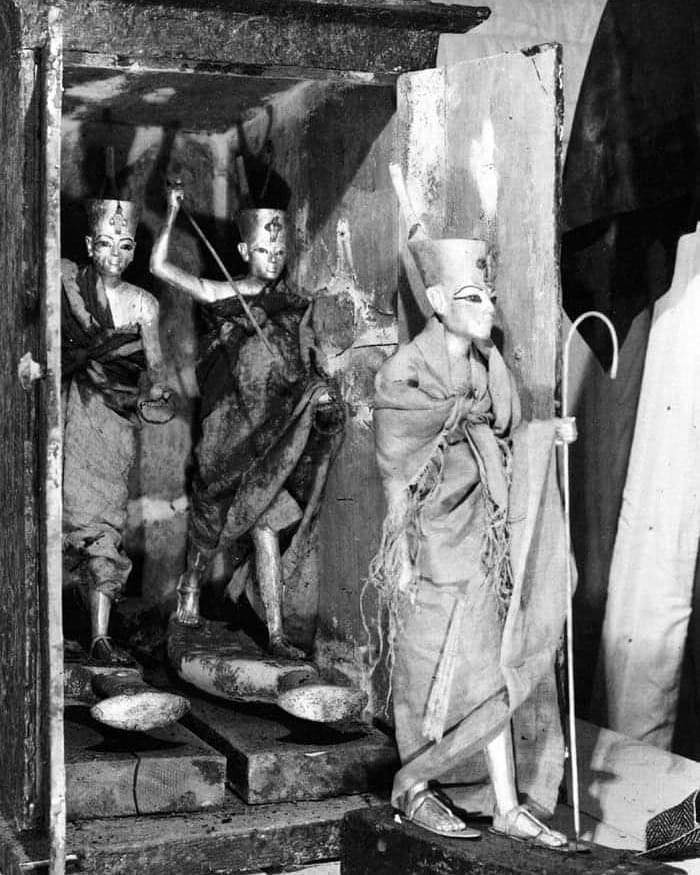Introduction: A Monumental Find
In 1922, British archaeologist Howard Carter unearthed a discovery that would forever change the field of archaeology: the tomb of the ancient Egyptian pharaoh Tutankhamun. Hidden in the Valley of the Kings for over 3,000 years, the tomb was a treasure trove of history, art, and cultural significance. Its pristine condition and the wealth of artifacts it contained provided an unparalleled glimpse into ancient Egyptian life, death, and burial practices.
This discovery not only captivated the world but also reignited global fascination with Egyptology. Even today, the uncovering of Tutankhamun’s tomb remains a landmark event, inspiring ongoing research and admiration.
The Journey to the Tomb
Howard Carter’s Persistence
Howard Carter’s search for Tutankhamun’s tomb was marked by years of dedication and frustration. By the early 20th century, many believed the Valley of the Kings had been fully excavated. However, Carter, supported by his patron Lord Carnarvon, remained convinced that the young pharaoh’s tomb was yet to be found.
His persistence paid off when, in November 1922, his team uncovered a hidden staircase leading to a sealed doorway. Behind it lay one of the few unspoiled tombs in the valley—a find that would surpass all expectations.
The Unveiling of Tutankhamun’s Tomb
A Moment Frozen in Time
When Carter first peered into the tomb, his words—”Yes, wonderful things”—became legendary. The antechamber was filled with an astonishing array of objects, including gilded chariots, ceremonial couches, and jewelry. Each item offered a glimpse into the opulent life of ancient Egyptian royalty.
Why the Tomb Was Extraordinary
Unlike most tombs in the Valley of the Kings, which had been plundered over centuries, Tutankhamun’s tomb remained largely untouched. This rarity made it a time capsule of Egypt’s 18th Dynasty. The burial site contained over 5,000 artifacts, all preserved with incredible detail, including the iconic gold funerary mask and the young pharaoh’s nearly intact mummy.

Insights Gained from the Discovery
Life and Death of Tutankhamun
The artifacts revealed much about the short life and untimely death of Tutankhamun. His burial treasures highlighted the wealth and craftsmanship of the period, while his mummy provided clues about his physical condition. Modern studies, including DNA analysis and CT scans, have since uncovered evidence of genetic disorders and possible causes of his death, such as malaria and a leg fracture.
Egyptian Culture and Religion
The tomb also shed light on ancient Egyptian religious beliefs and funerary customs. Objects like canopic jars, amulets, and paintings depicted scenes from the “Book of the Dead,” illustrating the pharaoh’s journey to the afterlife. The sheer wealth of the burial goods emphasized the importance of preparing for eternity in Egyptian culture.
The Global Impact of the Discovery
The Rise of “Tut-mania”
The discovery sparked an international frenzy. Newspapers worldwide reported on the excavation, and exhibitions of the treasures drew massive crowds. Tutankhamun became a cultural icon, inspiring everything from fashion to literature. This phenomenon, often called “Tut-mania,” reflected the global fascination with ancient Egypt.
Advancing Archaeological Practices
Carter’s meticulous documentation of the tomb set new standards for archaeological practices. His photographs, drawings, and detailed notes preserved invaluable information, allowing future generations to study the site even after its contents were moved to museums.

Ongoing Legacy
Continued Research
The treasures of Tutankhamun’s tomb continue to be a subject of study. Advances in technology, such as 3D scanning and genetic analysis, have revealed new insights about the pharaoh’s lineage, health, and the artistry of his burial items. The tomb also underscores the importance of preserving historical sites, as many other archaeological treasures have been lost to time or human interference.
Cultural Significance
Tutankhamun’s tomb remains a symbol of the allure of discovery and the mysteries of the past. Its artifacts, displayed in museums around the world, connect millions of people to the grandeur of ancient Egypt. The young pharaoh’s legacy is a reminder of the timeless fascination with one of history’s greatest civilizations.
Conclusion
The discovery of Tutankhamun’s tomb by Howard Carter in 1922 was not just an archaeological triumph; it was a window into a lost world. The tomb’s extraordinary preservation, wealth of artifacts, and cultural insights have made it one of the most significant finds in history. It transformed our understanding of ancient Egypt, inspired generations of researchers, and captured the imagination of people worldwide. As new technologies uncover even more about this historic discovery, Tutankhamun’s legacy continues to shine, much like the treasures he took with him to eternity.
